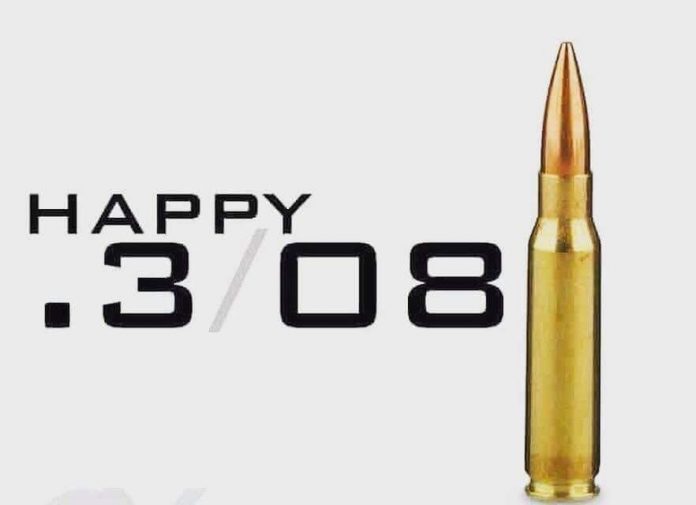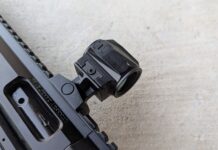
Writers, reviewers, content creators, and instructors use a wide variety of terms when it comes to describing the function and feel of a trigger. These can get confusing as to the actual function they are describing, and there can be some slop and crossover. Slop actually being a term used in describing a triggers “feel” in motion.
Have you ever heard of a ‘Tactical Reload’?
Does that mean reloading when you are out of ammunition or reloading when it is tactically convenient? Don’t know? Depends upon who is/was teaching or where you learned it, doesn’t it. It does, I have heard it used both ways. I personally use it to describe a reload from empty and also use the term “emergency reload” to describe the same circumstance. What others call a tactical reload I usually refer to as ‘topping off’ or an ‘admin reload’ since they take place in a non-hurried environment where either you are covered by others or are between drills. Personally I believe ‘topping off’ is overly taught and too much emphasis is placed on doing it when it will both unlikely ever be necessary and is an inferrable skill from a regular administrative load. Not to say it shouldn’t be practiced at all, but that a couple of reps is about all it needs and they don’t need to be particularly speedy. Like reholstering it isn’t a task to be done at speed, it is to be done safely.
But I digress.
The same confusion over terms can apply to triggers, so let’s take a look at the terms and go over what the term refers to. We’re going to skip over items like Double Action or Two Stage, those have clearly defined meanings. We are instead going to focus on the terms that relate to trigger movement and function.
Welcome to vocabulary.
Take-up, Pre-travel, or “Slack”
Regardless of the firearm, the first motion of the static trigger is its take-up. Some triggers have significant take-up, others have so little it is negligible. All triggers have some, the change from when the trigger is untouched and at rest to when the finger is against the trigger but not yet applying reward pressure to fire.
This is also referred to as pre-travel, motion that the trigger body goes through that doesn’t impart the final movements to the firing surfaces. It moves the parts that engage with the firing control surfaces, like the sear itself in an AR, but it is not going through any of the motions to release the mechanism to fire.
With me so far? Clear as mud?
For a practical example take an empty AR and pull the trigger while the safety is still in the on/safe position. There will be some slight movement, that’s (some of) the pre-travel.
This may refer to the first stage in a two-stage trigger as well. I say may, because it is contextual. A two-stage trigger will also have a tiny amount of pre-travel… or pre-pre-travel perhaps, in this case, from when the trigger is at total rest to actually engaging the pressure of the first-stage. A two-stage triggers first stage is a deliberate spring tensioned take-up distance.
During shooting you may be told to take up the travel or the “slack” in the trigger, this movement is what that phrase is referencing and can be referred to in context of a two-stage. Two-stage triggers have a deliberate and predictable preparatory motion to deliver the shooter to a very consistent, and thus predictable, release point. The goal is to give the shooter as close to absolute tactile control over the shot as the firearm can deliver.
Travel
This one is easy, it is the total motion of the trigger. From its at rest position to its most reward or displaced location, the trigger travel is its full range of motion.
In context of taking a shot, the travel may be referring to the actively engaged motion until the break. For a double action pistol as an example, the travel may be referencing the full pull distance that cocks the hammer and pushes it to the release, firing the shot. That context may ignore the small amount of pre-travel.
Creep
Usually a slang term for when there is a notable amount of travel involved in disengaging the firing surfaces. A trigger may be referred to as “having a lot of creep” if the sear doesn’t disengage smoothly on a slow press of the trigger and you get a number of stops and starts before the release. You may also hear it referred to as “gritty” if the trigger transmits and grinding feel back to the shooter as they pull through the trigger’s creep.
Very high end triggers very rarely have noticeable creep. One of the trade offs of that is the fact there is significantly less material to wear through before the trigger becomes non-functional, it must be accounted for during the mechanisms construction. Do it well and you get something like the Geissele SSA-E, do it poorly and your trigger will quickly become dangerous.
A trigger’s noticeable creep will depend on how much motion is required to release the firing surfaces and its ‘grit’ will depend upon how well machined and clean those surfaces are. These are also dependent upon how much motion is transferred into the trigger and to the shooter. That is why a bullpup trigger feels comparatively longer and is much harder to make into a clean two-stage than a Remington 700 or an AR-15, more motion is involved in firing the gun because the motion must be transferred. Even something with a long and heavy trigger, like a SIG P226 or a Ruger GP100, can have cleaner feeling and more efficient feeling triggers because all of the mechanism parts are right next to each other.
In contrast one 1911 may have very little creep in its single action trigger while another might have significant creep and grit, even if the trigger travel is still rather short.
Trigger Break or Release
The point at which the controlling surfaces of the trigger release and fire the weapon. It is often referred to as a “break” because the hammer or striker breaks free of the sears hold and this releases the pressure the shooter has been building to fire the gun. It feels like a “break” so it is the trigger break.
A clean break is often metaphorically referred to as a ‘glass rod’ which is a very sudden snap. A “mushy” break is one where there is a lot of motion and the point at which firing will occur is not easily felt. Mushy, like gritty, usually refers to a lot of excess motion and felt inputs in the trigger that interferes with finding the predictable break point.
In military triggers, anything with a burst option tends to have an unpleasantly unpredictable release since the tension on the trigger parts and some of the surfaces rotate and change shot to shot.
Overtravel or Post-travel
The motion of the trigger beyond the break or release point, sometimes very little and sometimes noticeable. There always needs to be some over-travel so that the trigger can move past, and not simply too (which could result in a failure to fire), the break point.
Reset
The point in the forward motion of the trigger where it can re-engage the control surfaces and bring them to the release point again. It is usually a shorter distance than the whole of the trigger travel from rest.
Releasing to the reset or just beyond the reset instead of all the way to the at rest position is a critical component to shooting both accurately (by reducing excess motion) and quickly (by, again, reducing excess motion).
So there you have it, the terms and there (probable) contextual meanings. Go pull some triggers and hit the targets.



